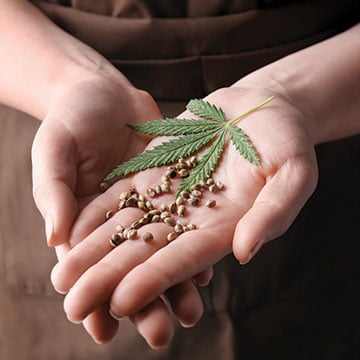This Month’s Featured Article
Cannabis Legalization
By Christine Bates | info@mainstreetmag.com
 When voters went to the polls in November 2016 there was another surprising winner – the legalization of recreational marijuana. In four states – California, Nevada, Massachusetts, and Maine – voters decided to make marijuana consumption for recreational purposes legal, joining Colorado. There are already eight retail recreational stores open in Massachusetts with another four coming soon.
When voters went to the polls in November 2016 there was another surprising winner – the legalization of recreational marijuana. In four states – California, Nevada, Massachusetts, and Maine – voters decided to make marijuana consumption for recreational purposes legal, joining Colorado. There are already eight retail recreational stores open in Massachusetts with another four coming soon.
Like picking apples, visiting farm stands, sampling craft beers, or, in the case of Maine, eating lobsters, cannabis tourism is already underway in New England.
In New York, Governor Cuomo has announced his intention to legalize recreational marijuana. According to a January 2019 Quinnipiac poll, 65% of New York residents support the measure. What should we expect for our local economy and real estate values? And what is the difference between CBD and THC – the active ingredients of hemp and marijuana?
Colorado high
Marijuana has been a boon to the Colorado economy with sales hitting $1.5 billion in 2017 and generating more economic output than 90% of the other industries in the state. There are also negative impacts. Law enforcement is battling an active black-market with arrests for illegal manufacture and possession.
In Colorado, legalization increased commercial real estate prices of warehouse and industrial properties in certain permitted zones. Between 2009 and 2014, in anticipation of legalization, 36% of all new industrial tenants were related to the marijuana industry according to commercial real estate broker CBRE. Data centers and self-storage facilities have been repurposed for the cultivation and manufacturing of marijuana. The overall impact on commercial real estate has been lower inventory and 27% higher demand for warehouses, 17% for storefronts, and 14% for land. Commercial landlords’ biggest concerns seem to be smell, fire danger, moisture, security, and receiving cash for rent.
Land values have increased where outside cultivation is permitted. Retail shops have helped to revitalize some vacant suburban strip malls. Because of federal regulations of marijuana which restrict banks’ ability to accept cash deposits generated by marijuana sales, landlords often charge two to three times market rates when leasing properties.
An academic study published in Economic Inquiry in early 2018 found that legalization even increased housing values in Colorado. More people seem to want to live where legal marijuana is sold. Users, job seekers, and entrepreneurs have flocked to the state. Home prices are higher in the 60 cities where marijuana is legal than in the 200 where it is not. Residential price levels are estimated to have increased 12% a year where it is legal, and only 9% where it is not. Residential neighborhoods with grow houses, typically in depressed areas, trade at a discount, but those close to retail businesses can trade at a premium.
Researchers studied the impact on Pueblo County, CO, and determined that legal cannabis brought $58 million to the local struggling economy according to The Denver Post. Much of the revenue was used to improve infrastructure, but the county devoted $420,000 to college scholarships for 210 students. This year tuition assistance will increase to $750,000. The report also studied the negative impacts of legalization including illegal growing, but found, on balance, no increase in homelessness or use among youth.
Meanwhile in California…
California was the first state to legalize medical marijuana in 1996 and by January 2018, with regulations in place, recreational marijuana could be sold legally with a 15% statewide tax plus additional locally imposed fees and taxes. Total annual tax revenues are headed for $1 billion a year.
A Keller Williams real estate broker claimed that a $2.5 million dollar greenhouse on ten acres, which would have sold for $2.5 million before legalization, now goes for $5 million. Over 20 pot-related transactions have closed in the last few years totaling over $100 million.
What’s up in Great Barrington?
January 11, 2019, was the first day of legal recreational marijuana sales in Great Barrington, MA, and Theory Wellness’s retail store had an orderly 2.5-hour line out the door on a recent, frigid Saturday. The store’s head of marketing estimates that Theory Wellness will contribute between $100,000 and $200,000 in tax revenues to the Town of Great Barrington this year.
The store will also add an estimated ten to 15 full-time jobs with the additional positive economic impact of attracting visitors to town. In a conversation with Rich Aldrich, who handles commercial real estate for Stone House Properties in the Berkshires, he indicated that legalization has “certainly moved the market for selling and leasing commercial space. We’ve closed a dozen transactions with another couple pending. It’s not just retail. It’s warehouses for growing as well. Investors are purchasing and leasing at premium prices and there’s very little inventory.”
Aldrich reports that these deals are usually all cash with out-of-state investment groups that are anxious to get started. There is also agricultural interest in outdoor cultivation. Zoning is the key in every location with each town adopting its own regulations. In Massachusetts the state Revenue Commission estimated that the recreational marijuana sales tax of 6.2% and excise tax of 10.75% would add $44 million to the state’s coffers this year.
What it could mean for New York
After the NYS Health Department study concluded that the benefits of legalizing marijuana outweigh the cost, Governor Cuomo has proposed legalization as part of the state’s budget process this year. He estimates that tax revenues could reach $300 million by 2023 when fully implemented.
In the meantime, regulatory details are missing and it appears that individual counties could opt out. What is clear is that counties, towns, and villages should be considering the eventuality of recreational marijuana legalization when considering changes to zoning ordinances. Hypothetically the excise taxes levied on regulated retail cannabis sales should flow down to local economies as an additional source of revenue to support services, reduce property taxes, and fund scholarships and infrastructure. The cost of fewer arrests for possession and the reduced expense of incarceration should also be beneficial at the state level.
Growing hemp is already legal in New York
Hemp is a variety of the species Cannabis Sativa L. Unlike the hallucinogenic strain of cannabis, hemp contains almost no THC – tetrahydrocannabinol, the main active ingredient of the cannabis plant which creates a “high.”
Hemp is grown and harvested for its fibers and stalks. Its seeds and flowers are used in animal feed and health foods. Specific strains of hemp also produce CBD oil, which has an assortment of claimed medical benefits whether ingested or rubbed on. Tea, creams, oils, and supplements containing CBD can already be purchased legally. The federal Hemp Farming Act of 2018 became law in December 2018 and removed hemp (defined as cannabis with less than .3% THC) as a Schedule I controlled substance, which makes it an ordinary agricultural product.
Chris Regan, owner of Sky Farm lettuce, grew two acres of hemp last year as a pilot, and plans on expanding to eight acres grown under contract to Hudson Hemp this year. “It’s a lot less labor than salad greens and slightly more profitable,” according to Regan. “Hemp can tolerate a lot of different soils and is a vigorous plant. It’s potentially a much larger market in terms of acreage than marijuana. It’s a beautiful plant and I hate to harvest it.”
There is a problem with deer, which, to everyone’s surprise, enjoy eating hemp plants. “Next year I’m putting up a fence,” Regan stated.
Another real estate play
If you want to invest in cannabis real estate with all of its risks and rewards you could buy Innovative Industrial Properties, a publicly traded REIT (IIP) that invests in companies that grow, store, and distribute medicinal cannabis. It’s now trading at over 100 times earnings and was the first cannabis IPO. The company has already purchased and leased a 127,000 square foot warehouse for medical marijuana in Hamptonburgh in Orange County, NY.
Remember that under federal law marijuana is still illegal and states where it is legal require that marijuana must be grown in the state where it is sold. If that changes, cannabis grown in sunny California would be much cheaper than in New England and real estate prices for warehouses and stores might decline.
Main Street Magazine neither advocates nor opposes the legalization of marijuana.


